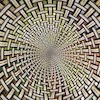Skip over navigation

A Mixed-up Clock
Sealed Solution

Or search by topic
Number and algebra
Geometry and measure
Probability and statistics
Working mathematically
Advanced mathematics
For younger learners
Working Systematically

Working Systematically
If you work systematically you can be sure you won't leave out any possibilities and it's a valuable skill for tackling many problems. Have a go at these ...
A Mixed-up Clock Age 7 to 11Challenge Level 


Age 7 to 11
Challenge Level 





There is a clock-face where the numbers have become all mixed up. Can you find out where all the numbers have got to from these ten statements?
Sealed Solution Age 7 to 11Challenge Level 


Age 7 to 11
Challenge Level 





Ten cards are put into five envelopes so that there are two cards in each envelope. The sum of the numbers inside it is written on each envelope. What numbers could be inside the envelopes?
You may also like
Digging Into Geometry
Dig deeply into geometrical ideas by having a go at the tasks in this Primary student feature.

